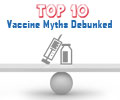DNA vaccine research focuses on the creation of effective delivery systems and efficient biomanufacturing strategies.

Some of the more promising delivery approaches include transdermal, needle-free patches, devices that transport the plasmids into the skin via air pressure, and electroporation, in which electrical pulses are used to temporarily open the cell membrane, allowing the plasmids easier access to the interior of cells.
On the manufacturing front, Philippe Ledent, Ph.D., process transfer and development manager at Eurogentec Biologics, explained that his company has faced major challenges scaling up the output of both protein and nucleic acid products. For plasmid production Eurogentec turned to fed-batch protocols for better growth control of the cultures, he said, adding that in a two-step process that was based on biomass expansion followed by plasmid DNA production, it was possible to increase fermentation yields 10-fold.
Tony Hitchcock, head of manufacturing technologies at RecipharmCobra Biologics, provided another approach to plasmid purification. The company's product line includes bacteria, animal cells, viruses, novel proteins, and antibodies. The overall process that Hitchcock sought to optimize was quite similar to that followed by Eurogentec: high density fermentation, followed by alkaline cell lysis, chromatographic purification, and final formulation. Also covered in the GEN article are DNA vaccine production techniques used by Althea Technologies and VGXI.
Source-Eurekalert














